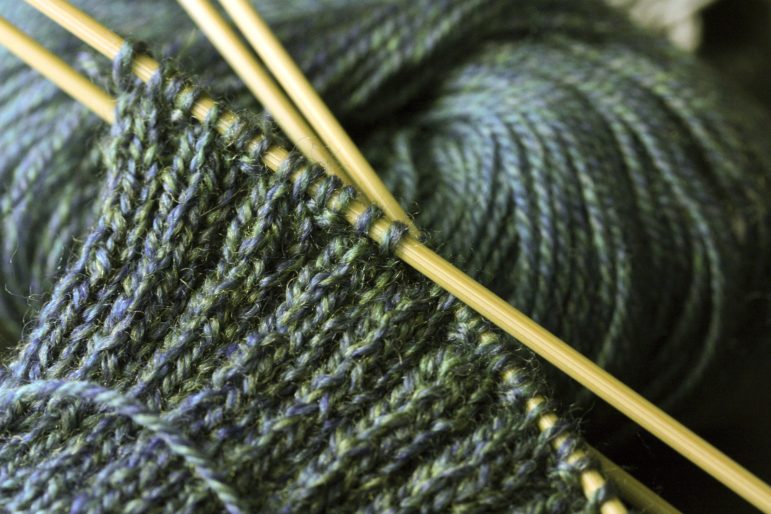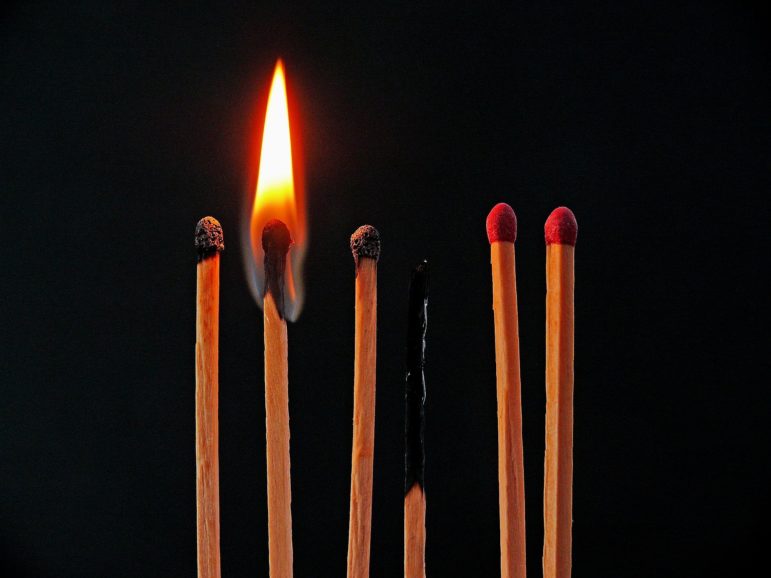TWH – Laura is a supermarket worker. She practices Lukumí and requested we use a pseudonym. She’s tried to quit her job three times since June but can’t afford to lose it. “So, I cry, pray, and ask for help,” she told us.
Laura says it is hard to go to work, very hard in fact. She’s called in sick. She’s also asked at work to be moved from her current work interacting with the public. She asked for “something in the back a few days a week.”
TWH – Laura is a supermarket worker. She practices Lukumí and requested we use a pseudonym. She’s tried to quit her job three times since June but can’t afford to lose it. “So, I cry, pray, and ask for help,” she told us.
And it is not just retail. One college professor, who described himself as a Catholic who practices folk religion also, said, “I’m having a hard time caring, seeing, or understanding them,” referring to students. The “them” in that sentence is a clue, and so is the need to withdraw that Laura describes. They may be experiencing job burnout.
Burnout is a type of work-related emotional exhaustion, and it appears to be on the rise. The increase in burnout seems to be in all professions, but primarily with those professions interacting with the public during the COVID-19 pandemic. Those professions would generally be in education, healthcare, and retail.
Burnout is not a clinical diagnosis. Rather, it is an outcome of stress typified by emotional exhaustion, cynicism, and feelings of depersonalization followed by a lack of personal accomplishment.
The phenomenon was first documented by psychologist Herbert Freudenberg in the mid-1970s describing the experiences of a volunteer staff of a free clinic providing services to those surviving drug addictions. Freudenberg was one of the volunteer staff.
Subsequent research has found that job burnout can have severe interpersonal consequences. Those who have struggled with burnout recall visits to emergency rooms for panic attacks, consulting physicians with little relief, and growing personal isolation from friends and work. Survivors of burnout also describe declining work productivity, efficiency, and performance, a lack of interest in work, and an overall lack of confidence in their abilities. Many find no option other than leaving their profession.
Minnesota’s KNSI reported yesterday that the job burnout seems on the rise among state workers. Epidemiologist Maureen Leeds told KNSI that workers involved in COVID-19 testing and contact tracing are experiencing the emotional strain of work during the pandemic.
“The interviewers are dealing with the same sort of sense of burnout that, you know, we’ve been doing this constantly since March. And the press of our other responsibilities is also starting to be felt more,” Leeds said.
Medscape reported the same phenomenon yesterday among oncology professionals. Susana Banerjee, MD, PhD, chair of the European Society for Medical Oncology Resilience Task Force, said that the “risk of distress and burnout has increased,” during the current pandemic.
Banerjee added that while job performance “has improved” from the start of the public health crisis, “Urgent measures to address well-being are essential.”
Working at home during the pandemic has also meant longer hours, more worry about personal finances, and feelings of insecurity. Lawyers are reporting burnout as well, but it is everywhere.
One recent survey of 1,500 individuals found that the “75% of people have experienced burnout at work, with 40% saying they’ve experienced burnout specifically during the pandemic.”
Respondents also conveyed that stress is the contributing factor. The flexibility, and even privilege, to work from home was accompanied by dissolving boundaries between when work ends and when home begins.
Some research has suggested that Generation X, those between roughly between 40-56 years old, may be bearing the brunt of the burnout phenomenon. This generation is old enough to have adult children and are likely grandparents but are also young enough to providing care to elderly parents. Other research has suggested that Millennials, the generation immediately following GenX, are at the forefront of the burnout experience.
What doesn’t help is social media. Research in the Journal of Health Psychology found that social media increased burnout in some individuals. But the same research also found that mindfulness appeared protective against burnout.
But mindfulness does help. So do self-affirmations. And so do simple rituals that create boundaries and spaces as well as relieve anxiety. Three practices that many Pagans are familiar with.
Our college professor is trying yoga and mindfulness meditation. He said, “they are not helping yet, I just started. But I can see how they will help. Yoga makes me set a time aside for me, or rather away from the computer. Mindfulness makes me aware of what I am reacting to.”
There’s evidence these practices help.
Banerjee noted that “The impact of COVID-19 on well-being has the potential for serious negative consequences on work, home life, and patient care.” Anything that reduces stress during the pandemic can be emotionally beneficial even if a practice doesn’t immediately improve burnout.
While burnout is still not recognized as a clinical event, awareness about it is likely to increase soon. The World Health Organization has added burnout to its International Disease Classification (ICD-11), the official compendium of diseases that will be used beginning in 2022. But it will not be a diagnosis, rather it will describe burnout and raise awareness of the occupational issue and consequences. That will result in more data and more knowledge about the phenomenon.
“What is important here is to understand that in the ICD-11 definition, burnout is identified as an occupational phenomenon and not a medical condition,” said Christine Sinsky, MD, vice president of professional satisfaction at the AMA last year. “Burnout is primarily related to the environment, such as when there is a mismatch between the workload and the resources needed to do the work in a meaningful way.”
Meanwhile, Laura is taking a fresh approach for herself. She has taken up knitting. That may turn out to be a home run. Having a hobby has been shown to be protective against burnout. Hobbies stoke our interests outside work while providing an outlet for creativity and self-improvement.

Image credit: elizabethkeckert from Pixabay
Mental Health America notes that knitting may help with anxiety, lower blood pressure, reduce depression, increase a sense of wellbeing, increase a sense of accomplishment, and reduce feelings of isolation. It even improves mindfulness.
The Wild Hunt is not responsible for links to external content.
To join a conversation on this post:
Visit our The Wild Hunt subreddit! Point your favorite browser to https://www.reddit.com/r/The_Wild_Hunt_News/, then click “JOIN”. Make sure to click the bell, too, to be notified of new articles posted to our subreddit.

